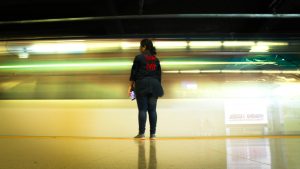Building Inclusive Classrooms That Celebrate Cultural Diversity
–>
In today’s globalized society, it is more important than ever to foster an inclusive and culturally diverse learning environment in our classrooms. As educators, it is our responsibility to create a space where all students feel valued, respected, and represented. Not only does this promote social equality, but it also enhances the educational experience for all students. Building inclusive classrooms that celebrate cultural diversity is crucial in preparing our students to navigate the diverse world they will encounter beyond the school walls. In this article, we will discuss the importance of building inclusive classrooms and provide practical strategies for creating a culturally diverse learning environment.
The Importance of Building Inclusive Classrooms
An inclusive classroom is one where all students, regardless of their background, culture, or ability, feel welcomed and supported. It is a space that promotes respect, empathy, and understanding among students and teachers. The benefits of creating an inclusive and diverse classroom are numerous, both for the students and the larger society. Here are some of the reasons why building inclusive classrooms should be a priority for educators:
Promotes Social Equality
Building inclusive classrooms is a crucial step towards promoting social equality. In a diverse classroom, students from different backgrounds learn alongside each other, breaking down social barriers and bridging cultural gaps. This promotes a sense of equality and understanding that extends beyond the classroom walls.
Enhances Academic Achievement
When students feel included and accepted, they are more likely to actively engage in learning and perform better academically. A study by the American Psychological Association found that students in culturally inclusive classrooms had higher academic achievement and were more motivated to succeed compared to those in non-inclusive classrooms.
Prepares Students for the Real World
In an increasingly globalized world, students need to be exposed to diversity and learn how to navigate cultural differences. By building inclusive classrooms, we are preparing our students to interact with people from diverse backgrounds and perspectives, helping them develop crucial skills for the future workforce.
Creates a Positive Learning Environment
A diverse and inclusive classroom promotes a positive learning environment where students feel accepted and valued. This, in turn, creates a sense of belonging and leads to increased retention rates.
Strategies for Building Inclusive Classrooms
Now that we have established the importance of building inclusive classrooms, let’s discuss some practical strategies for creating a culturally diverse learning environment:
Start with Self-Education
As educators, it is important to examine our own cultural biases and educate ourselves on cultural diversity. This can be done through workshops, training sessions, or reading materials. By understanding our own biases, we can create a more inclusive and respectful learning environment for our students.
Incorporate Diverse Learning Materials
Make an effort to incorporate diverse learning materials, such as books, videos, and articles, into your lessons. This exposes students to different cultures and perspectives and promotes a more comprehensive understanding of the world. Additionally, consider representing the diverse backgrounds of your students in your teaching materials.
Encourage Dialogue and Discussion
Inclusive classrooms allow for open and respectful discussions about cultural diversity. Encourage your students to share their own experiences and viewpoints, and lead discussions on sensitive topics in a safe and respectful manner. This helps promote understanding and empathy among students.
Celebrate Cultural Differences
One of the best ways to foster an inclusive classroom is to celebrate the cultural diversity of your students. This can be done through cultural events, food tastings, or inviting guest speakers from different backgrounds. Not only does it promote cultural pride, but it also allows students to learn from each other.
Incorporate Multicultural Perspectives in Lessons
When designing lessons, try to incorporate multicultural perspectives and examples. This allows students to see themselves and their cultures represented in the curriculum, promoting a sense of inclusion and engagement.
Conclusion
Building inclusive classrooms that celebrate cultural diversity is crucial for promoting social equality, enhancing academic achievement, and preparing students for the real world. By implementing the strategies discussed in this article, educators can create a safe and welcoming learning environment for all students. Let’s work together to create a better future for our students by embracing and celebrating our cultural differences.










